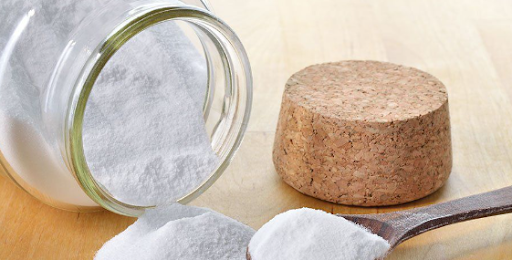For many people, yeast infections—mostly brought on by the overgrowth of Candida albicans—can be an annoying and persistent problem. Although several over-the-counter medications are available to treat this issue, baking soda baths are becoming a more well-liked and well-researched natural solution. In this post, we’ll look at the reasons behind yeast infections, examine if bathing is recommended while sick, and talk about the positive effects of adding baking soda to your regimen for efficient recovery, along with some questions, like how to get rid of a yeast infection fast. Can I take a bath with a yeast infection? Or can hot water kill yeast infection?
Why do Yeast Infections happen?
It’s important to comprehend the causes of yeast infections before we discuss the treatment. Our bodies naturally contain the fungus Candida albicans, mostly found in the genitalia and digestive tract. However, an overgrowth of yeast can result in an infection when there is an imbalance in the body’s environment, such as a compromised immune system, hormonal changes, or the use of antibiotics.
How to Get Rid of a Yeast Infection Fast:
Treating a yeast infection as soon as possible reduces discomfort and prevents the illness from worsening. Many wonder whether bathing may help treat a yeast infection and whether hot water can eradicate the condition. The answer is yes, but it’s important to consider the type of bath and its components.
Can I Take a Bath with a Yeast Infection?
Bathing during a yeast infection can help reduce discomfort and itching and is generally harmless. But it’s important to be careful about your bath items because some bubble baths and soaps might worsen the symptoms. Alternatively, a relaxing sitz bath and home treatments like baking soda may be better.
Can Hot Water Kill a Yeast Infection?
Hot water can help reduce yeast infection symptoms, even though it might not completely cure it. Including some chemicals, such as baking soda, can increase the efficiency of warm water in treating infections and reduce itching and suffering.
Can Baking Soda Help Yeast Infection?
A common household item, baking soda has alkalizing and antifungal qualities that may help restore the pH balance of the affected area and make it less conducive to yeast proliferation. Its calming qualities can also help with the itchiness and discomfort caused by yeast infections. It is a best natural remedies for yeast infection.
How Much Baking Soda in a Bath for Yeast Infection?
Each person may require a different amount of baking soda in their bath to treat a yeast infection. A typical recommendation is one cup to half a cup of baking soda for each bath. But it’s crucial to pay attention to your body and begin with a lower dose, then increase as necessary. Using baking soda moderately is important, as overuse can irritate the skin.
How to Use Baking Soda to Treat a Yeast Infection:
It’s easy to incorporate baking soda into your bath routine to relieve yeast infections. Here’s a detailed how-to use baking soda as yeast infection treatment:
Get ready for a warm bath by adding warm water to your bathtub. Ensure the water is cool enough because too much heat exacerbates irritation.
- Add Baking Soda: Stir 1/2 to 1 cup into the bathwater. To aid in the baking soda’s dissolution, stir the water.
- Spend 15 to 20 Minutes Soaking: Take a deep bath and spend 15 to 20 minutes soaking. Now is the moment to unwind and let the baking soda do its calming job.
- Pat Dry: Use a fresh towel to gently pat yourself dry after taking a bath. Refrain from rubbing, as this could make inflammation worse.
- Repeat as Necessary: You can repeat the baking soda bath two to three times a week, or as often as necessary, to relieve your symptoms, depending on how severe they are.
Sitz Bath for Yeast Infection:
Consider taking a sitz bath, a shallow bath where the pelvic area can be submerged, for more focused relief. To make a sitz bath using baking soda:
- Fill a basin: Pour enough warm water into a clean, shallow tub or basin to cover the pelvic area.
- Add 1/2 to 1 cup to the water to dissolve the baking soda and whisk.
- Sit and Soak: As you sit in the basin, ensure the impacted area is submerged. Let it soak for fifteen to twenty minutes.
- Pat Dry: Use a fresh towel to pat the area dry after the sitz bath.
In summary:
Even though baking soda baths might be a useful addition to your collection of natural treatments for infections with yeast, you need to keep in mind that every person will react uniquely. It’s best to speak with an expert in medicine for an accurate diagnosis with appropriate therapy if signs intensify or prolong. People can move toward peaceful, all-encompassing relief from the agony of yeast infections by accepting baking soda’s natural, calming qualities.
Also Read: 5 Remedies to Get Rid of Headaches Naturally


